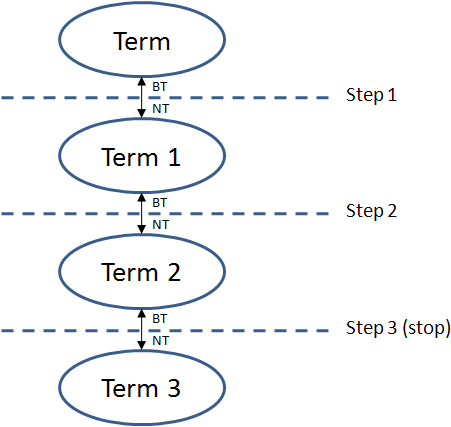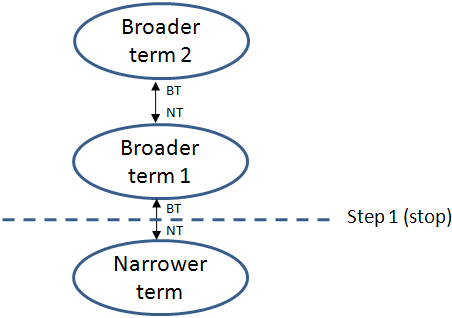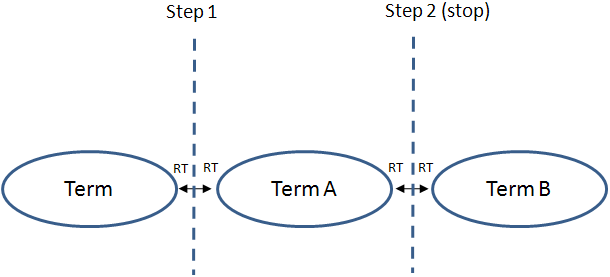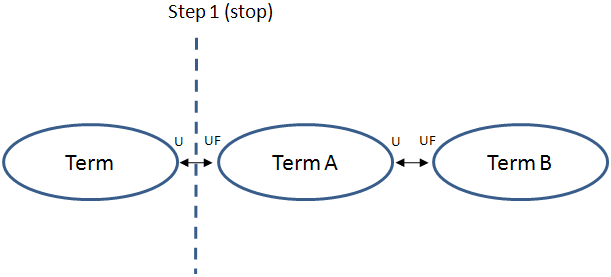...
In the figure above, objects in the Content Repository are represented by the small circles. The shaded ovals represent tags (Furniture, Electronics, and so forth). The content items within the shaded ovals have that tag or tags assigned to them. The relationship between various content items/tags are as follows:
- An A content item with no tags assigned to it (A).
- A tag assigned to six different Content Repository items (B).
- An item with one tag assigned to it and related to two others through a thesaurus relationship (C).
- Two items with four tags related to them through a thesaurus relationship (D).
...
The meaning of "User for" and "Is used for" in the context of the current tag can be a little confusing. When a tag has a "Use for" tag assigned to it, you should read the relationship as "Use for the current tag the tag X". For example, if the tag "America" has a "Use for" relationship with the tag "The United States of America", read it as "Use for 'America' the tag 'The United States of America'". When a tag has an "Is used for" tag assigned to it, you should read the relationship as "The 'Is used for' tag is used for the current tag". Thus, if the tag "America" has an "Is used for" relationship with the tag "The United States of America", read it as "'The United States of America' is used for 'America'".
Related Tag Relationships
...
How tags are related to each other in the thesaurus has a direct effect on the number of objects that are retrieved from the Content Repository when a tag is referenced in a Content Overview or Dynamic Content Overview content element. This is because for each thesaurus relationship that a tag has, it automatically has relationships with other tags through their defined relationships. For each thesaurus relation type in XperienCentral, rules are applied to detagine determine what the wider context of thesaurus relations is as a result of the stepping that is performed from one tag to another. The stepping between relationships detagines determines what a tag's wider thesaurus context is. For each thesaurus relationship type, a predefined number steps between tags is followed from a source tag. The number of steps (tag depth) that is followed for each thesaurus tag relationship in XperienCentral is:
...
From a source tag, XperienCentral will follow a chain of three steps through successive NT relationships and then stop. In the following example, if the source tag is "tag", it will have a thesaurus relationship with "tag 1", "tag 2", and "tag 3". The relation between "tag" and "tag 1" is a direct relationship, that is, they are tied directly together through a "Broader/Narrower tag" (BT/NT) relationship. The relationship between "tagTerm" and "tag Term 2" and "tagTerm" and "tag Term 3" is indirect, as is that between "tag1Term 1" and "tag Term 3":
Broader Tag Relationship
From a source tag, XperienCentral will step to a broader tag and stop. A step from a narrower tag to a broader can only happen in the context of a direct relationship between the two. From the stepped-to tag (the broader tag), no other broader tags will be stepped to. For example, if "Narrower tagterm" is the source tag, "Broader tag Term 1" is considered a relation but "Broader tag Term 2" is not:
Related to
For tags that are related to each other, XperienCentral will follow a chain of two successive "related to" steps to other tags from the source tag and then stop. In the following example, if "tagTerm" is the source tag, it has a direct relationship with "tag Term A" and an indirect relationship with "tag Term B":
Use for/Is used for
For "Use for" and "Is used for" relationships, XperienCentral will step from the source tag to the "Use for" or from the source to the "Is used for" tag and then stop. A tag must have the relationship "Use for" or "Is used for" directly with the source tag, that is, it cannot be reached through an indirect relationship. Once a "Use for" or "Is used for" step is completed, no further "Use for" or "Is used for" relations can be made. In the example below, "tagTerm" has a direct relationship with "tag Term A" but not with "tag Term B" and vice versa.
...
For example, given the rules set forth in the table above, if you step from a source tag to a tag tied to it through a "related to" relation (RT) and that tag has three levels of narrower tags under it, XperienCentral will only step to two of the three levels of narrower tags. This is because the NT depth rule after step 1 is 2.
In order to illustrate the depth rules, the following six examples show how thesaurus relationships and depth rules detagine determine which tags will be detagined determined to have a broader context relationship with a source tag and thus which content items will be returned by a Content Overview or Dynamic Content overview content element containing the source tag(s). In the examples below, the following colors/acronyms are used:
...



